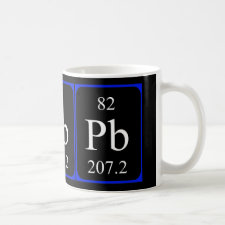
Authors: de Liss Meza López F, Khan S, da Silva MA, Anchieta Gomes Neto J, Picasso G, Sotomayor MDPT
Article Title: Systematic study on the synthesis of novel ion-imprinted polymers based on rhodizonate for the highly selective removal of Pb(II).
Publication date: 2021
Journal: Reactive and Functional Polymers
Volume: 159
Article Number: 104805.
DOI: 10.1016/j.reactfunctpolym.2020.104805
Alternative URL: https://www.sciencedirect.com/science/article/pii/S1381514820311925
Abstract: The present work reports the successful synthesis of a novel Pb2+ ion-imprinted polymer (Pb-IIP) based on a rhodizonate-like selective ligand by precipitation. Three functional monomers, namely acid acrylic (ACRY), 2-acrylamido-2-methylpropane sulfonic acid (AMPSA) and allylamine (ALLY), were chosen by computer simulation using density functional theory (DFT). The materials obtained were applied for the selective removal of Pb2+ from aqueous solutions and were characterized by Fourier transform Infra-red (FTIR), scanning electronic microscopy (SEM) and flame atomic absorption spectrometry (FAAS). The results obtained from the adsorption experiments performed under optimal conditions were in good agreement with the computational design and showed that IIP-AMPSA exhibited a relatively higher adsorption capacity for Pb2+ (51.84 mg g-1) than IIP-ACRY (31.02 mg g-1) and IIP-ALLY (12.90 mg g-1). Kinetics studies showed that the adsorption process followed a pseudo second-order reaction rate, and equilibrium was reached after 10 min of reaction. The Temkin isotherm model was found to be the most appropriate for fitting the experimental data, indicating that the adsorption process occurred in the active centers with heterogeneous surface. Based on the application of IIP-AMPSA, the relative selectivity coefficients obtained for Pb2+ in the presence of Cu2+, Ni2+, Cd2+, Zn2+, Co2+, and Fe2+ were in the range of 89-128. The practical application of IIP-AMPSA showed that the recovery rate of Pb2+ from river samples was almost 100%; this can be attributed to the imprinted cavities and specific binding sites that were created, which, positioned in a predetermined orientation, formed a well-defined coordination geometry through the rhodizonate ligand
Template and target information: lead ion, Pb(II)
Author keywords: Pb2+, Rhodizonate complex, DFT, Ion-imprinted polymer, selective adsorption



Join the Society for Molecular Imprinting

New items RSS feed
Sign-up for e-mail updates:
Choose between receiving an occasional newsletter or more frequent e-mail alerts.
Click here to go to the sign-up page.
Is your name elemental or peptidic? Enter your name and find out by clicking either of the buttons below!
Other products you may like:
 MIPdatabase
MIPdatabase









